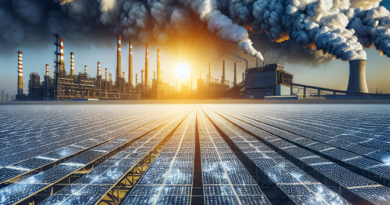Goodbye to solar panels? The European Union wants to focus on this new technology
Is Europe really saying goodbye to solar panels? As part of the energy transition program, many technologies are being studied to overcome the dependence on gas for electricity production.
Italy, like other European countries (see Spain), depends heavily on gas plants (40% of electricity production comes from gas).
To overcome the gas obstacle to the energy transition, Europe is focusing on various technologies, well beyond the solar panel.
You can read the objectives of the European Union in the Flexibility for Hydrogen (FLEX4H2) project, which wants to promote a flexible combustion system capable of operating with any concentration of hydrogen in natural gas.
In this way turbines powered by natural gas and other fuels could be converted into dihydrogen (H2) gas turbines without the release of CO2.
read also Investing in the energy transition: the sectors to follow New European technology: goodbye to solar panels The European Union could say goodbye to solar panels or at least combine them with another technology for the production of clean energy.
The project is called FLEX4H2, or Flexibility for Hydrogen.
It was signed on 3 December 2022 and started on 1 January 2023, with an expected completion date of 31 December 2026.
The project was financed by Climate, Energy and Mobility, with a total cost of 4,872,197.50 euros.
The project description states the intention to introduce gas turbines powered by dihydrogen (H2), instead of natural gas and other fossil fuels.
The idea is to support electricity production without releasing CO2.
The FLEX4H2 project will further develop a proprietary combustion technology, known as constant pressure sequential combustion, an Italian project, which has the enormous potential to enable stable and clean operation by using H2 mixed with natural gas at any concentration , up to 100%.
As can be read, this technology has already been used in the H-class GT36 engines developed by Ansaldo Energia.
Therefore the project aims to optimize the technology by combining computational and analytical methods with experimental testing campaigns, demonstrating the operation of the combustor with dihydrogen concentrations of 70%, 90%, 100% in an engine-relevant environment at world-class laboratories.
read also Nuclear energy generated in the EU is at its lowest level since 1990 The project's objectives for new technology The project aims to push the technological frontiers for low-emission combustion of hydrogen to power modern gas turbines at temperatures and pressures of high ignition.
To achieve this it will be necessary to keep the engine performance high.
Among the objectives there is therefore also the emission one, set by the strategic research and innovation agenda (SRIA).
According to the data, a single engine equipped with the new FLEX4H2 combustion system has the potential to remove up to 2 million tons of carbon dioxide per year.
At the same time it should provide enough clean energy to power up to 500,000 homes.
The main objective is therefore to demonstrate that the technology can reach 100%.
This result represents a "fundamental technological milestone for large gas turbines", especially for those dedicated to large-scale electricity production, as explained by Federico Bonzani, product and technology director of Ansaldo Energia.
“The decarbonization of gas turbines is a fundamental part of the transition of the energy landscape,” he concluded.




